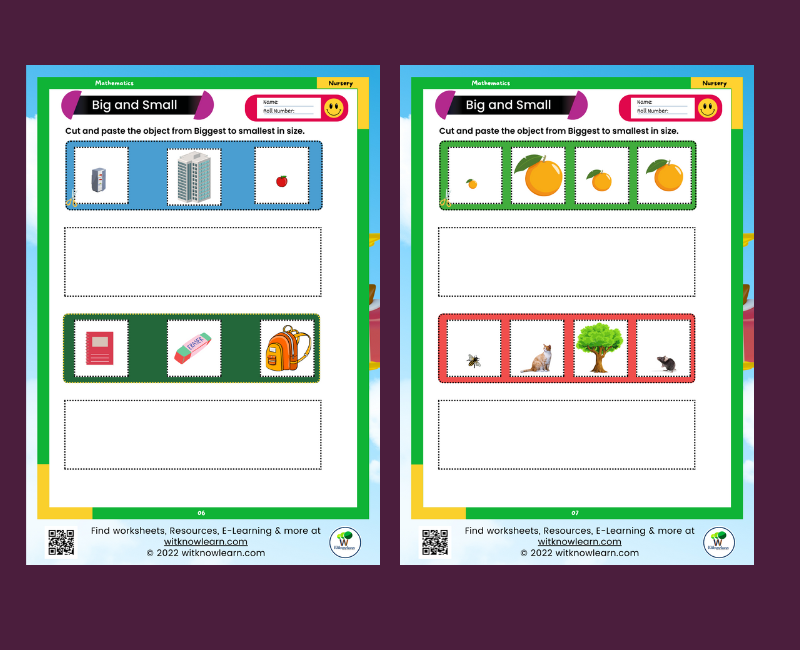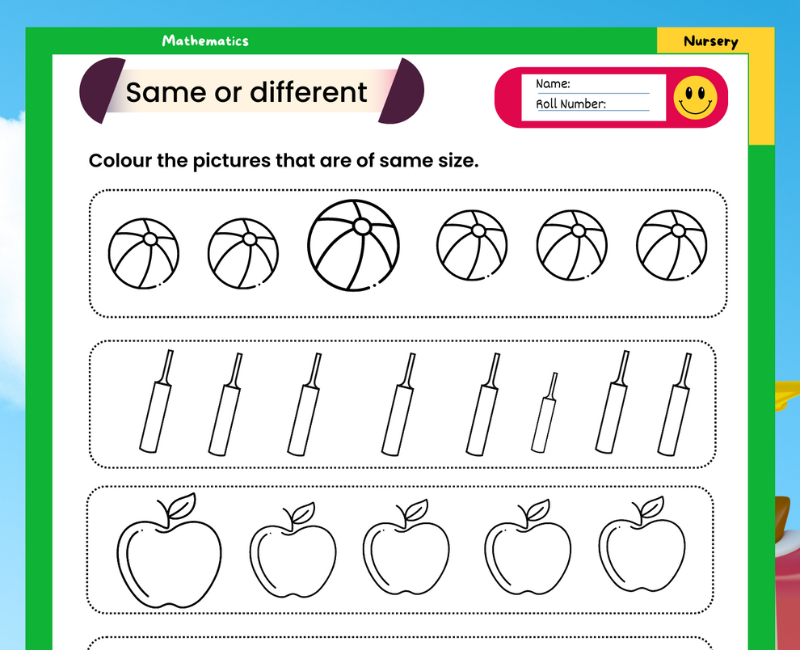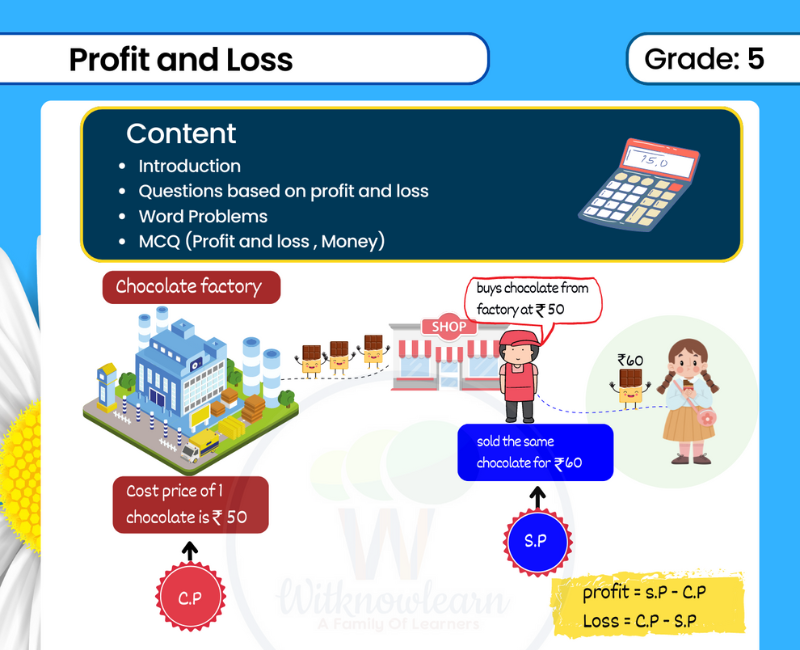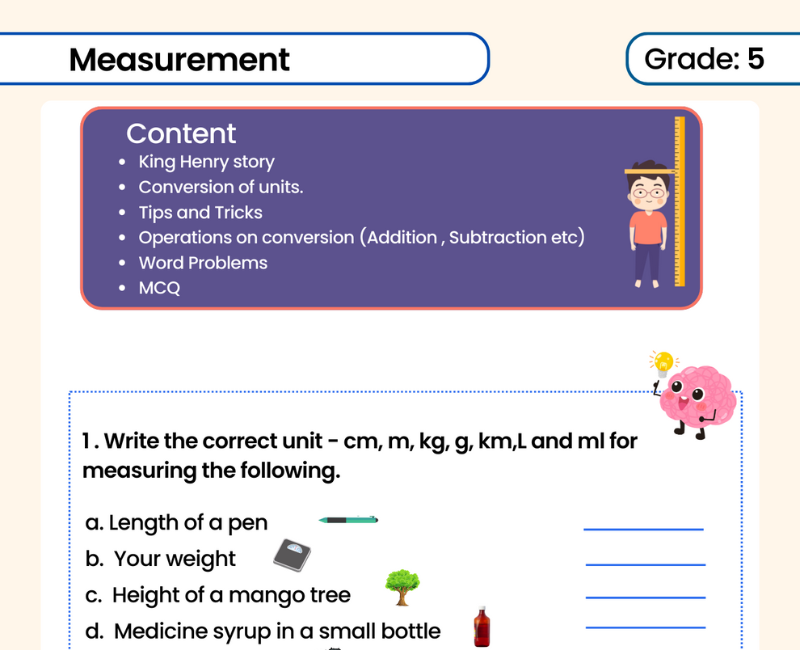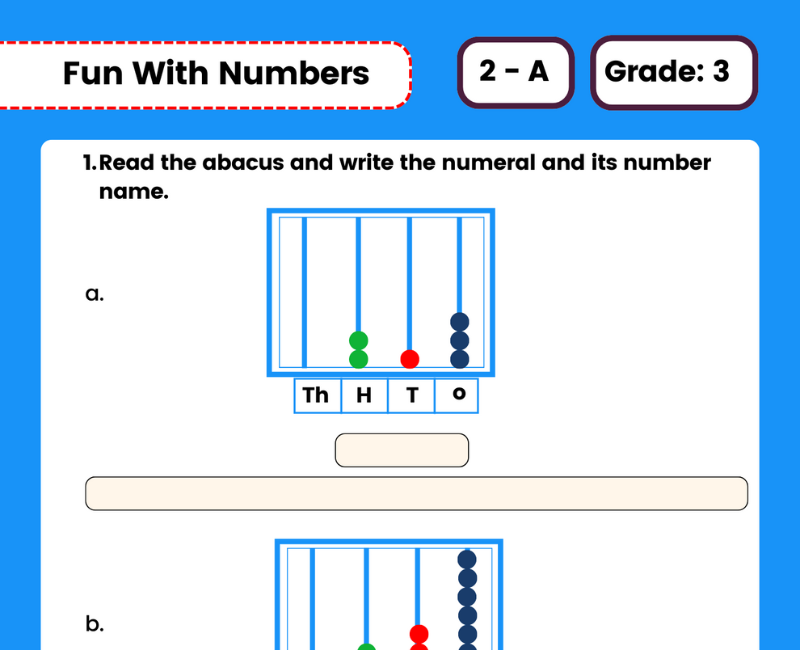Fun and Engaging Identifying Biggest and Smallest Worksheets for Nursery Class
Experience an innovative approach to early childhood education with our biggest and smallest worksheet collection. These expertly designed materials are curated to spark curiosity and encourage young learners to understand the concepts of size and comparison in a fun, engaging manner. Whether it's identifying the biggest animal in a group or colouring the smallest fruit, our worksheets make learning an enjoyable journey. The hands-on approach helps children recognize and differentiate sizes in their day-to-day life, bolstering their cognitive development. Get your little ones excited about learning with our biggest and smallest worksheets and watch them develop fundamental math skills while having fun.
why biggest and smallest concept is important for nursery and kindergarten kids
Understanding the concepts of "biggest" and "smallest" is fundamental to a child's early cognitive development, especially for those in nursery and kindergarten. Here are a few reasons why these concepts are essential:
Introduction to Mathematics: Learning about the biggest and smallest objects serves as an introduction to basic mathematical concepts. It helps children understand and apply comparative concepts such as bigger, smaller, equal to, less than, and more than, laying a strong foundation for more complex mathematical concepts in the future.
Developing Observation and Comparison Skills: When children learn to identify the biggest and smallest objects, they're honing their observation skills. They learn to pay attention to detail, compare different objects, and make decisions based on their observations.
Language Development: These concepts also help in language development. Understanding and using comparative words like 'big', 'bigger', 'biggest', 'small', 'smaller', 'smallest' expands children's vocabulary and comprehension skills.
Problem-Solving Skills: Understanding the concept of size helps children approach problem-solving in a logical way. It aids in developing their reasoning abilities, a skill that will benefit them in various aspects of life.
Real-World Application: The concept of biggest and smallest has practical applications in everyday life, from understanding quantities while shopping to appreciating the difference in sizes in the natural world.
Fine Motor Skill Development: When children engage in activities related to these concepts, such as colouring or circling the biggest or smallest object in a worksheet, they are also developing their fine motor skills and hand-eye coordination.
Kickstart your child's journey of learning with our biggest and smallest worksheet collection, designed to engage young minds in a fun and educational way. Our worksheets focus on the concept of size and order, making them an excellent tool to introduce foundational mathematics to children, specifically those in nursery and kindergarten.
Our small to big numbers worksheet introduces kids to the concept of numerical order. Starting with the smallest to the biggest, children get to practice arranging numbers in ascending order, enhancing their understanding of number sequencing and numerical values. This concept is further reinforced in our smallest to biggest and biggest to smallest worksheets, which integrate visual aids to make learning more interactive and appealing.
Our big, bigger, biggest worksheet, and small, smaller, smallest worksheet focus on the concepts of comparison and gradation. These worksheets aim to enhance children's comprehension of relative sizes, helping them distinguish between objects of different sizes and understand the progression from small to big and vice versa.
We also provide the greatest and smallest number worksheets, designed to teach children about the numerical values. By identifying the greatest and smallest number in a group, kids can enhance their comparison and analytical skills. The smallest number worksheet focuses on helping kids recognize the smallest number in a series, which is an essential early math skill.
Children are exposed to the concept of size in their daily life, making it an important subject to be covered in early learning. Our smallest and largest, and smallest and biggest worksheets, are intended to reinforce this concept in a simplified and engaging manner. They include a variety of exercises, such as identifying the smallest size object or colouring the biggest item in a group.
The big and small worksheets for kindergarten PDF are a complete package covering a wide range of exercises. These worksheets, along with the big and small worksheet for nursery, focus on the application of size concepts to real-world objects, helping children connect their learning to their environment.
To further enhance children's understanding of sizes, we offer the concept of big and small worksheet, big or small worksheet, and big and small concept worksheet. These worksheets focus on teaching children to differentiate between big and small items using a variety of exercises. The smaller and bigger number worksheet and biggest and smallest number worksheet are designed to help kids compare numerical values and understand their order.
Our big and small worksheet PDFs are easily downloadable and printable, offering a versatile learning tool for both classroom and home use. The big and small pictures worksheet and big to small worksheet are specifically designed to make learning fun and interactive, engaging children with colourful images and engaging tasks.
Last but not least, our big and small worksheets for preschool are designed to introduce the concepts of size and comparison to the youngest learners. Using simple images and exercises, these worksheets are the perfect way to start your child's learning journey.
In summary, our collection of biggest and smallest worksheets offer a comprehensive range of exercises aimed at introducing children to the concept of size and order. With our worksheets, learning becomes an engaging and enjoyable journey, helping children lay a solid foundation for their future mathematical skills.
